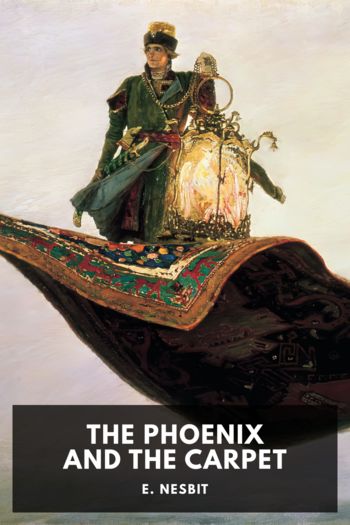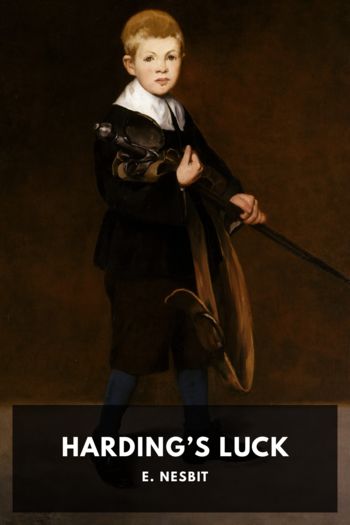The Enchanted Castle by E. Nesbit (online e book reading .TXT) 📕

Description
The Enchanted Castle is a novel for young readers by Edith Nesbit, who was writing in the late Victorian and early Edwardian era in Britain. As in her other children’s books, it begins in the everyday world but quickly brings in the fantastical and magical. A large part of the delight of Nesbit’s books is that her children behave in quite ordinary ways, getting into scrapes, getting dirty and their clothes torn, making decisions which seem right to them at the time but which are generally wrong-headed. It’s the contrast between the ordinariness of the children and the magical adventures they become involved in which makes the books so charming.
The Enchanted Castle was originally serialized in The Strand Magazine alongside stories by Rudyard Kipling and Arthur Conan Doyle. The first book edition was published in 1907.
In the story, Kathleen and her brothers Gerald and Jimmy find a way into a remarkable garden designed to create a Palladian landscape, full of statues and pseudo-Classical temples and buildings. It is not long before they come across a sleeping Princess. They wake her, and she introduces them to an item of real magical value, a ring which makes its wearer invisible. But once on, the ring won’t come off! “Those of my readers who have gone about much with an invisible companion will not need to be told how awkward the whole business is,” comments the author, which is indicative of the simple and direct language she uses, and the humor of the books. Even the invisibility ring, however, is not quite as simple as it seems; and many interesting and amusing adventures follow.
Read free book «The Enchanted Castle by E. Nesbit (online e book reading .TXT) 📕» - read online or download for free at americanlibrarybooks.com
- Author: E. Nesbit
Read book online «The Enchanted Castle by E. Nesbit (online e book reading .TXT) 📕». Author - E. Nesbit
Mabel crawled into cover of the taller trees, and there stood up looking as slender as a poplar and as unreal as the wrong answer to a sum in long division. It was to her an easy matter to crouch beneath the dinosaurus, to put her head up through the opening, and thus to behold the white form of Kathleen.
“It’s all right, dear,” she told the stone image; “I shall be quite close to you. You call me as soon as you feel you’re coming right again.”
The statue remained motionless, as statues usually do, and Mabel withdrew her head, lay down, was covered up, and left. The boys went home. It was the only reasonable thing to do. It would never have done for Mademoiselle to become anxious and set the police on their track. Everyone felt that. The shock of discovering the missing Kathleen, not only in a dinosaurus’s stomach, but, further, in a stone statue of herself, might well have unhinged the mind of any constable, to say nothing of the mind of Mademoiselle, which, being foreign, would necessarily be a mind more light and easy to upset. While as for Mabel—
“Well, to look at her as she is now,” said Gerald, “why, it would send anyone off their chump—except us.”
“We’re different,” said Jimmy; “our chumps have had to jolly well get used to things. It would take a lot to upset us now.”
“Poor old Cathy! all the same,” said Gerald.
“Yes, of course,” said Jimmy.
The sun had died away behind the black trees and the moon was rising. Mabel, her preposterous length covered with coats, waistcoats, and trousers laid along it, slept peacefully in the chill of the evening. Inside the dinosaurus Kathleen, alive in her marble, slept too. She had heard Gerald’s words—had seen the lighted matches. She was Kathleen just the same as ever only she was Kathleen in a case of marble that would not let her move. It would not have let her cry, even if she wanted to. But she had not wanted to cry. Inside, the marble was not cold or hard. It seemed, somehow, to be softly lined with warmth and pleasantness and safety. Her back did not ache with stooping. Her limbs were not stiff with the hours that they had stayed moveless. Everything was well—better than well. One had only to wait quietly and quite comfortably and one would come out of this stone case, and once more be the Kathleen one had always been used to being. So she waited happily and calmly, and presently waiting changed to not waiting—to not anything; and, close held in the soft inwardness of the marble, she slept as peacefully and calmly as though she had been lying in her own bed.
She was awakened by the fact that she was not lying in her own bed—was not, indeed, lying at all by the fact that she was standing and that her feet had pins and needles in them. Her arms, too, held out in that odd way, were stiff and tired. She rubbed her eyes, yawned, and remembered. She had been a statue—a statue inside the stone dinosaurus.
“Now I’m alive again,” was her instant conclusion, “and I’ll get out of it.”
She sat down, put her feet through the hole that showed faintly grey in the stone beast’s underside, and as she did so a long, slow lurch threw her sideways on the stone where she sat. The dinosaurus was moving!
“Oh!” said Kathleen inside it, “how dreadful! It must be moonlight, and it’s come alive, like Gerald said.”
It was indeed moving. She could see through the hole the changing surface of grass and bracken and moss as it waddled heavily along. She dared not drop through the hole while it moved, for fear it should crush her to death with its gigantic feet. And with that thought came another: where was Mabel? Somewhere—somewhere near? Suppose one of the great feet planted itself on some part of Mabel’s inconvenient length? Mabel being the size she was now it would be quite difficult not to step on some part or other of her, if she should happen to be in one’s way—quite difficult, however much one tried. And the dinosaurus would not try: why should it? Kathleen hung in an agony over the round opening. The huge beast swung from side to side. It was going faster; it was no good, she dared not jump out. Anyhow, they must be quite away from Mabel by now. Faster and faster went the dinosaurus. The floor of its stomach sloped. They were going downhill. Twigs cracked and broke as it pushed through a belt of evergreen oaks; gravel crunched, ground beneath its stony feet. Then stone met stone. There was a pause. A splash! They were close to water—the lake where by moonlight Hermes fluttered and Janus and the dinosaurus swam together. Kathleen dropped swiftly through the hole on to the flat marble that edged the basin, rushed sideways, and stood panting in the shadow of a statue’s pedestal. Not a moment too soon, for even as she crouched the monster lizard slipped heavily into the water, drowning a thousand smooth, shining lily pads, and swam away towards the central island.
“Be still, little lady. I leap!” The voice came from the pedestal, and next moment Phoebus had jumped from the pedestal in his little temple, clearing the steps, and landing a couple of yards away.
“You are new,” said Phoebus over his graceful shoulder. “I should not have forgotten you if once I had seen you.”
“I am,” said Kathleen, “quite, quite new. And I didn’t know you could talk.”
“Why not?” Phoebus laughed. “You can talk.”
“But I’m alive.”
“Am not I?” he asked.
“Oh, yes, I suppose so,” said Kathleen, distracted, but not afraid; “only I thought you had to have the ring on before one could even see you move.”
Phoebus seemed to understand her, which was rather to his credit, for she





Comments (0)